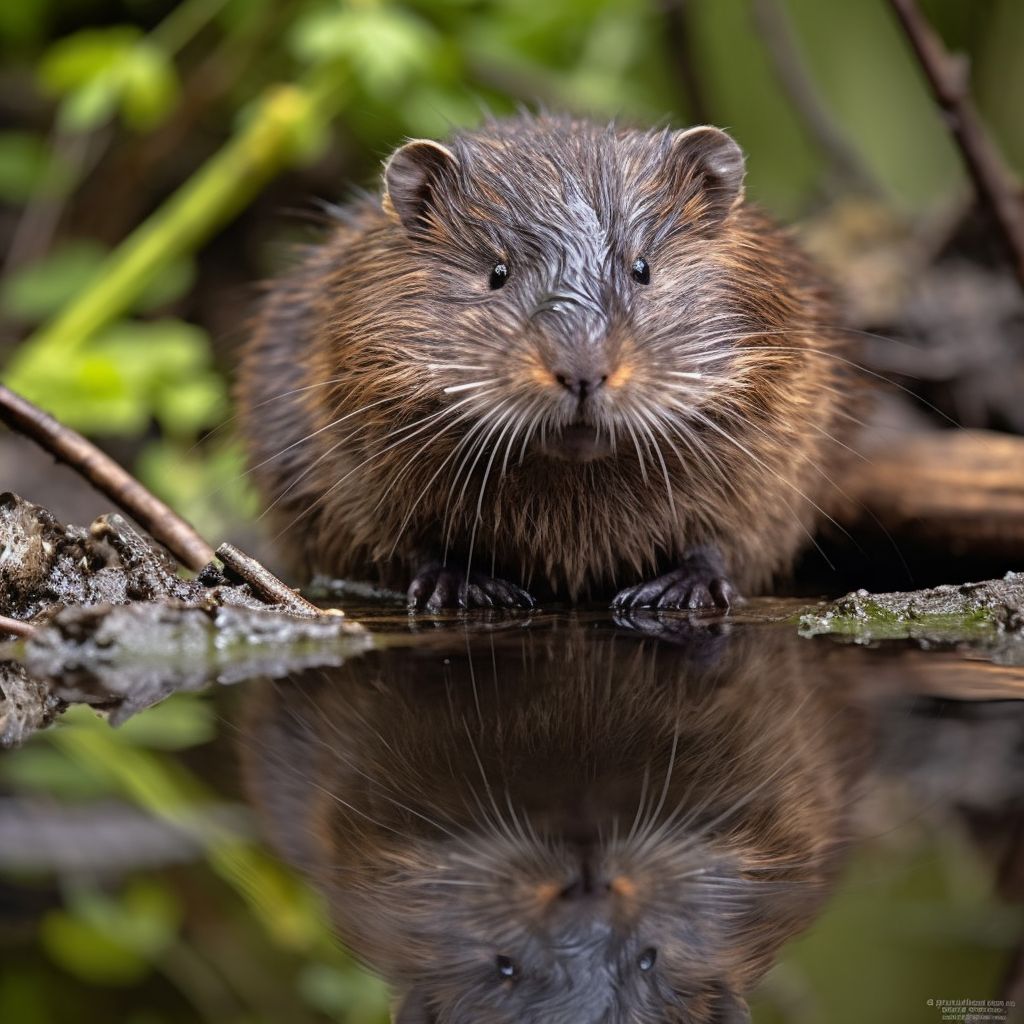Muskrat
The muskrat (Ondatra zibethicus) is a medium-sized semi-aquatic rodent native to North America. It is well-adapted to a life in and around water, inhabiting marshes, swamps, ponds, and other wetland areas. Muskrats are an essential part of their ecosystem, and their presence has various implications for both the environment and Human populations.
Description and Behavior
Muskrats are covered in thick, waterproof fur that ranges in color from dark brown to black. They have a stocky build, with a body length of around 16 to 24 inches, including their long, sparsely-haired, vertically flattened tail. Muskrats have partially webbed hind feet, which aid in swimming, and sharp claws that are useful for digging burrows.
These rodents are primarily nocturnal, though they can sometimes be seen during the day. They are known for their excellent swimming abilities and can stay underwater for up to 20 minutes. Muskrats are herbivores, feeding on a variety of aquatic plants, such as cattails, sedges, and water lilies, as well as some small invertebrates.
Habitat and Burrows
Muskrats are found throughout North America in a wide range of wetland habitats. They are skilled builders, creating burrows in the banks of ponds, lakes, and rivers, or constructing lodges made of vegetation in marshy areas. These lodges and burrows provide protection from predators and serve as a safe place for muskrats to rest, breed, and raise their young.
Reproduction
Muskrats are prolific breeders, with females capable of producing two to three litters per year, each containing five to ten young. The young are born in the safety of the burrows or lodges and are well-developed at birth, with their eyes open and fur already covering their bodies. They become independent within a few weeks and reach sexual maturity at around six months of age.
Significance in the Ecosystem and Human Society
Muskrats play a crucial role in maintaining the health of wetland ecosystems. Their feeding habits help control the growth of aquatic plants, while their burrowing activities aerate the soil and create habitats for other species. Muskrats are also an essential food source for a variety of predators, such as minks, foxes, and birds of prey.
In the late 19th century, muskrats were hunted and trapped for their fur, which was highly valued for its warmth and durability. Their fur was used in the production of various clothing items and accessories, such as hats, gloves, and coats.
Conclusion
The muskrat is a remarkable semi-aquatic rodent that has thrived in North America's wetland habitats. Its unique adaptations, such as its waterproof fur and webbed feet, enable it to navigate its environment with ease. Muskrats play a critical role in their ecosystems and have had various impacts on human society, particularly in the late 19th century, when their fur was a valuable commodity.

